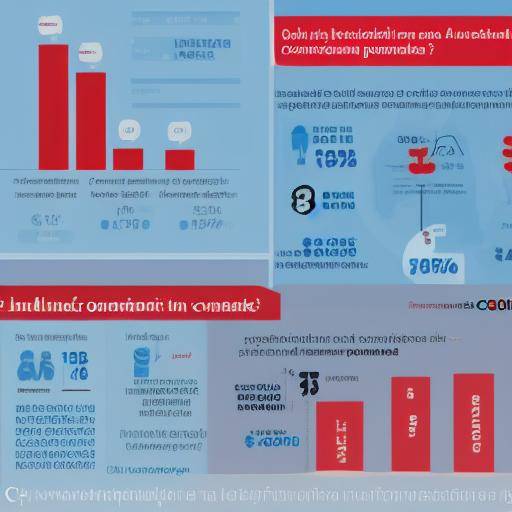
Financial reports are an essential part of any company. The accuracy, presentation and control of these reports are essential for both internal and external decision-making. In this article, we will explore how to prepare financial reports that are clear and effective, focusing on key aspects of precision, presentation and control.
Precision in the Financial Reports
Precision is the basis of any financial report. Without it, decision-making will be based on incorrect information. It is crucial that the data presented be accurate and reliable, which requires a rigorous process of collection, analysis and verification.
Precision import
The accuracy in the financial reports is vital to the firm's credibility with investors, business partners and regulators. An error in a report may have significant implications, so ensuring the accuracy of the data is fundamental.
Verification process
The accuracy verification process involves the thorough review of each figure, making sure it fits the applicable accounting and financial standards. This includes transaction reconciliation, balance check and validation of data sources.
Financial Management Software
The use of specialized software for financial management can help ensure accurate reporting. These tools automate many processes, reducing the possibility of human errors and accelerating the generation of accurate financial reports.
Professional Reporting
Appropriate presentation of financial reports is essential to convey information clearly and understandably. This involves careful selection of formats, graphics and additional information that facilitates the understanding of the data presented.
Clarity and Accessibility
Financial reports must be drawn up in a clear and concise manner, avoiding unnecessary technical jargon. The inclusion of executive summaries, intuitive graphics and well-structured tables improves the accessibility and understanding of the information.
Standard format
Maintaining a standard format in financial reports facilitates comparison between different periods and understanding of results. Consistency in the presentation involves the use of predefined templates and adherence to recognized filing standards.
Finance
In addition to the numbers, the financial narrative plays an important role in reporting. Explaining financial results in a broader business context helps readers to correctly interpret information and understand its impact on the company.
Control and Security in Financial Reports
Control and security are critical aspects to ensure the integrity of financial reports. This involves the implementation of sound internal controls to prevent errors, frauds and ensure the confidentiality of information.
Segregation of Functions
The principle of segregation of functions involves separating responsibilities within the enterprise to reduce the risk of mishandling of financial reports. Establishing clear controls on who has access to and responsibility for data is essential for appropriate control.
External and Internal Audits
Conducting external and internal audits helps to assess the effectiveness of financial controls, identify weaknesses and mitigate risks of irregularities. This provides an additional layer of security and confidence in the accuracy of financial reports.
Security technology
The use of security technology, such as data encryption, user authentication and access permits, helps to protect the integrity of financial information. Advanced technological measures help prevent cyberattacks and ensure data confidentiality.
How to Achieve the Balance between Precision, Presentation and Control
The key to preparing clear and effective financial reports lies in finding the balance between accuracy, presentation and control. Here are some practical tips for achieving this balance:
Integrate Processes
Integrating financial reporting, analysis, reporting and control processes can help ensure that the three key aspects are addressed in a comprehensive manner. This may involve close collaboration between financial, accounting and information technology teams.
Staff training
Providing continuous training to staff on the importance of accuracy, presentation and control in financial reports can foster an organizational culture that prioritizes these aspects. The development of skills in the use of financial software and internal control policies is also critical.
Using Analytical Tools
The incorporation of advanced analytical tools, such as business intelligence software, can facilitate the generation of clear and effective financial reports. These tools allow you to analyze large data sets and present the information visually attractive and understandable.
Process Audits
Conducting periodic audits of financial reporting processes allows identifying possible areas of improvement in terms of accuracy, presentation and control. Feedback from these audits can be used to continuously optimize processes and reduce the risk of errors.
Conclusion
In short, the preparation of clear and effective financial reports requires a balanced approach to accuracy, presentation and control. The combination of precise processes, clear presentation and solid controls is critical to ensuring the usefulness and credibility of these reports.
Furthermore, it is important to recognize that the business environment is constantly evolving, and adaptation to new regulations, technologies and reporting practices is critical to maintaining the relevance of financial reporting.
The application of the principles of precision, presentation and control will not only contribute to the financial transparency of the company, but will also generate confidence between investors, business partners and other stakeholders.
FAQs
1. Why is accuracy crucial in financial reports?
Precision is crucial in financial reports because it provides a reliable basis for decision-making. Report errors can lead to incorrect decisions affecting the company's financial health.
2. How can financial reporting be improved to make them more understandable?
Improving financial reporting involves using a clear and consistent format, including executive summaries and intuitive graphics, and providing additional financial narrative to contextualize data.
3. What role do internal controls play in the development of effective financial reports?
Internal controls are critical to ensuring the integrity and reliability of financial reports. They help prevent errors and fraud, ensuring that the information presented is accurate and secure.
4. How can it balance accuracy and presentation in financial reports?
The balance between accuracy and presentation is achieved by integrating processes, staff training, using analytical tools and conducting process audits to identify and address potential challenges.
5. What is the impact of technology on financial reporting?
Technology plays a crucial role in facilitating the generation, presentation and control of financial reports. The use of specialized software and advanced analytical tools can significantly improve the quality and efficiency of financial reports.
6. Why is it important that financial reports be understandable to the different stakeholders?
The understanding of financial reports is vital because it allows different stakeholders, such as investors, regulators, and managers, to make informed decisions based on the information presented. In addition, transparency contributes to establishing and maintaining strong relationships with these stakeholders.
In conclusion, accuracy, presentation and control are key aspects in the preparation of clear and effective financial reports. Ensuring data accuracy, reporting in a clear and attractive manner, and maintaining strong internal controls are crucial aspects that contribute to the integrity and usefulness of financial reports.
By following best practices and using appropriate technological tools, companies can significantly improve the quality and effectiveness of their financial reports, which in turn strengthens the transparency, confidence of stakeholders and informed decision-making within the organization.
It recalls that the preparation of financial reports is a continuous process that requires adaptation to changes in the business environment and the adoption of proactive approaches to ensure their relevance and usefulness over time.
I hope this article meets the quality standards you are looking for. If you have any other request or need additional adjustments, do not hesitate to let me know.






















































